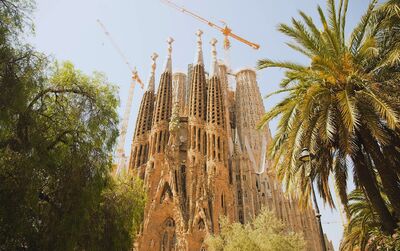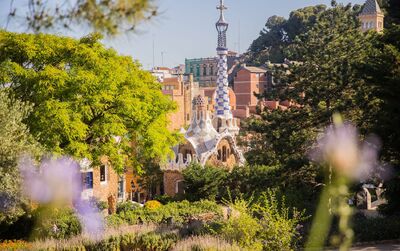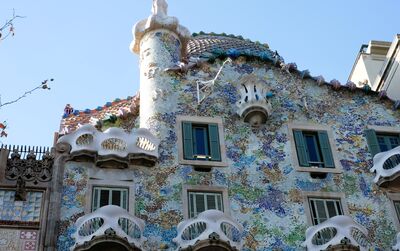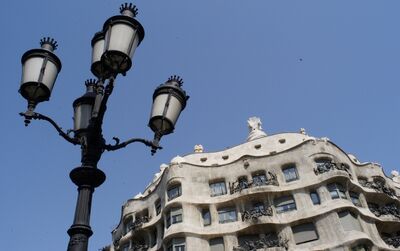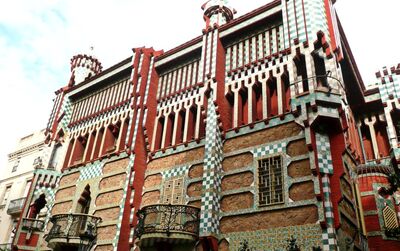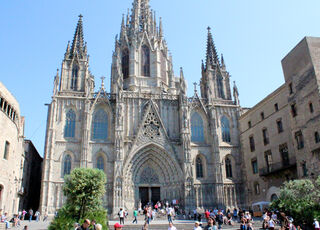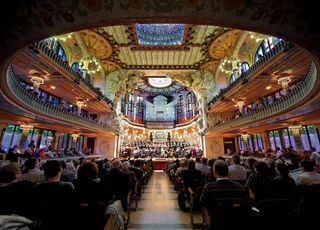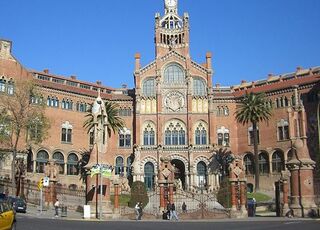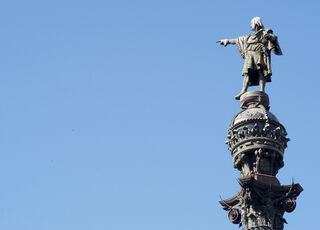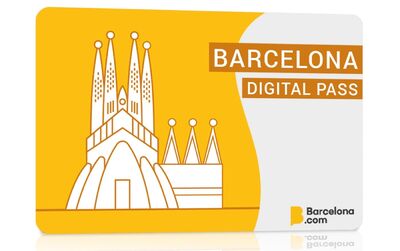Top Attractions in Barcelona
The City's Most Iconic Landmarks
From the fantastic to the sacred, Barcelona is an open-air museum. Its exceptional architectural heritage reflects a rich history and boundless creativity. The influence of Catalan Gothic, Modernism and above all the unique imagination of Antoni Gaudí has shaped a city with a thousand faces. From medieval alleyways to colorful 20th-century masterpieces, each monument reveals a piece of Barcelona's soul. This page presents a selection of emblematic buildings to visit, from must-see icons to more confidential treasures.
The modernist landmarks of Gaudí in Barcelona
The Sagrada Família
THE masterpiece of Antoni Gaudí and the most visited monument in Spain. Definitely the one you should visit first! Its history, its architecture and our advice to discover it ..
Park Güell
The Park Güell was destined to become a "garden city". This titanic project by Gaudí was never finished. It remains today as it was at the time: two houses and the park. An extraordinary park of course...
Casa Batlló
The Casa Batlló is the most original and dreamlike of the achievements of the architect Antoni Gaudí that you can visit in Barcelona. Polychrome facade decorated with ceramic and glass, undulating roof representing a mythical dragon.
La Casa Milà - La Pedrera
After the Sagrada Familia, La Casa Milà or "la Pedrera" as it is often called, is probably Gaudi's second most popular building in Barcelona.
La Casa Vicens
The Casa Vicens is the first important work of Antoni Gaudí. Opened for the first time to the public in autumn 2017. Its inspiration is not yet naturalist, but already the genius of the architect points in each detail of the building..
More Must-See attractions in Barcelona
Barcelona Cathedral
The Cathedral of the Holy Cross is dedicated to Saint Eulalia. Founded in the 13th century and completed in the 15th. Barcelona Cathedral is famous for its impressive Catalan Gothic architecture and its chapels decorated with sculptures and paintings. It also houses many treasures, including the relics of Saint Eulalia.
Catalan Music Palace
"Palau de la Música Catalana", another wonderful Modernist building by Lluís Domènech i Montaner, the temple of music in Barcelona!
Sant Pau Hospital
The Sant Pau Hospital is now part of a larger site called the Modernist Site of Sant Pau. An emblematic place of Barcelona inscribed in the World Heritage List by UNESCO. Its hospital is a living testimony of the modernist era that marked the city of Barcelona at the beginning of the 20th century.
Monument of Christopher Columbus
The monument to Christopher Columbus is a 60-metre high column that was erected for the 1888 World's Fair in honour of the famous explorer. The view of the city from the top is obviously remarkable.
To be discovered at your leisure
Historic Monuments
-
La Boqueria Market
The largest food market in Catalonia, famous for its colorful stalls and rich gastronomic offerings. -
Gran Teatre del Liceu
One of the most prestigious opera houses in Europe, located in the heart of Barcelona. -
Arc de Triomf
built for the 1888 Universal Exhibition, it marks the entrance to the Parc de la Ciutadella. -
Montjuïc Castle
former military fortress with stunning sea views. -
Bunkers del Carmel
historic site with spectacular panoramic views, perfect for sunset watching.
Religious Monuments
-
Santa Maria del Mar - Church of Saint Mary of the Sea
an elegant and luminous Gothic church in the El Born district. -
Pedralbes Monastery
a peaceful and historic haven on the edge of the city. -
Sant Pau del Camp
one of the oldest churches in Barcelona, with a simple Romanesque style.
Modern or Contemporary Monuments
-
Torre Glòries
an iconic skyscraper with a futuristic design. -
Mies van der Rohe Pavilion
a manifesto of modern architecture. -
Design Museum (Disseny Hub)
an innovative building dedicated to Catalan and international design.
To visit the Sagrada Família, you can buy a combined ticket allowing you to visit the Park Güell as well
also visit the Park Güell and enjoy a day (or two days) on the
Gothic architecture and the Modernist movement
Two major periods have shaped Barcelona’s architectural heritage: the Gothic era, from the 13th to the 15th century, which gave rise to austere and majestic buildings, and the Modernist movement (Catalan Art Nouveau), at the end of the 19th century, whose most famous representative is Antoni Gaudí. This duality between medieval heritage and modernist boldness makes Barcelona a unique city, where every street offers a striking contrast.
Style comparison:
Gothic
Period 13th – 15th century
Characteristics
Vertical and solemn style, with pointed arches, stained glass windows, peaceful cloisters, and massive stone walls.
Iconic monuments
Barcelona Cathedral, Santa Maria del Mar, Pedralbes Monastery.
Catalan Modernism
Period 1880 – 1925
Characteristics
Curved forms, vivid colors, mosaics, naturalistic details, and religious symbolism.
Iconic monuments
Sagrada Família, Park Güell, Casa Batlló, Palau de la Música
The great architects of Catalan Modernism
Although Gaudí is the most famous name, Catalan Modernism also saw the emergence of other major figures who left a lasting mark on Barcelona:
- Lluís Domènech i Montaner: designer of the Palau de la Música Catalana and the Hospital de Sant Pau, his style blends ornamental richness and Catalan symbolism.
- Josep Puig i Cadafalch: combining reinterpreted Gothic with geometric Modernism, he is behind Casa Amatller and Casa de les Punxes.
- Enric Sagnier: prolific and eclectic, he is notably the architect of the Temple of Tibidabo and Casa Mulleras.
- Jeroni Granell: influenced by Gaudí, he created Casa Comalat, an underrated gem of Modernism.
Tips for discovering Barcelona's monuments
- Book your tickets online to avoid waiting in line.
- Prefer morning or late afternoon visits for a quieter experience.
- Choose a tourist pass (Barcelona Card, Gaudí Pass) to access multiple monuments at a discounted price.
Also worth reading
Things to do in Barcelona: our favorite activities
